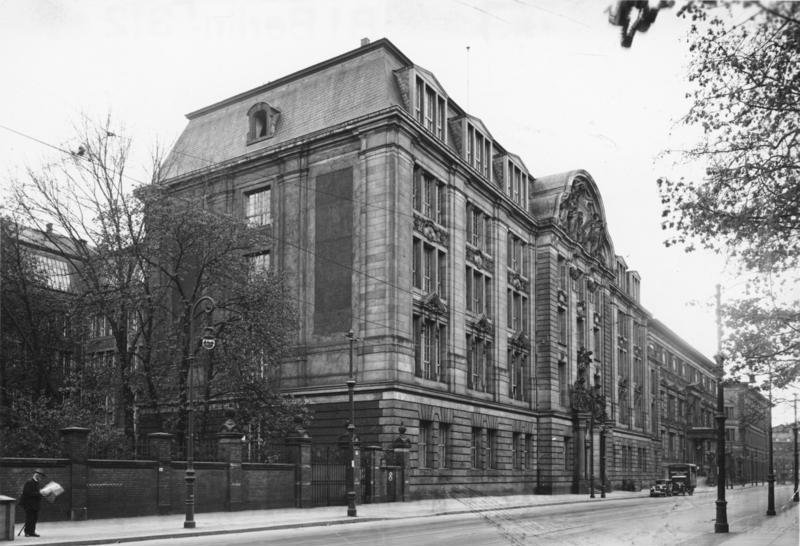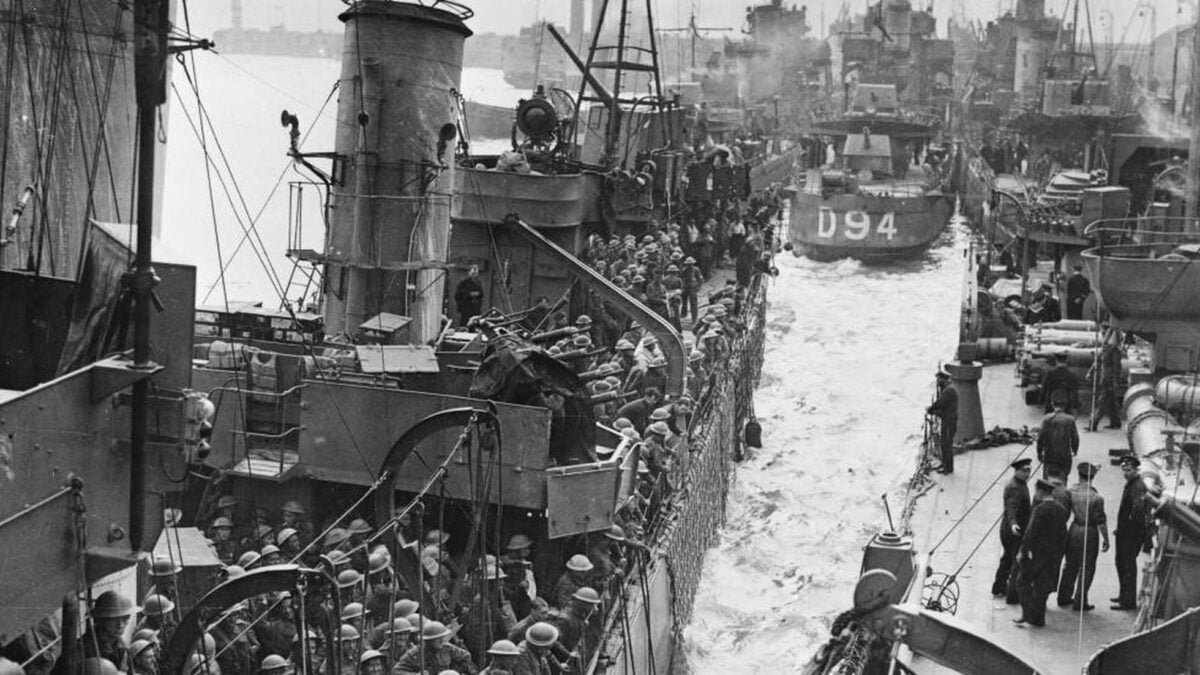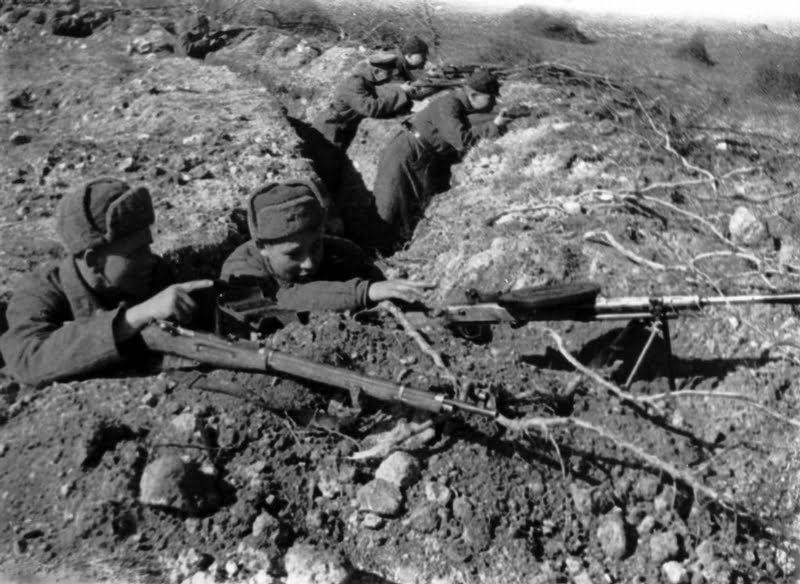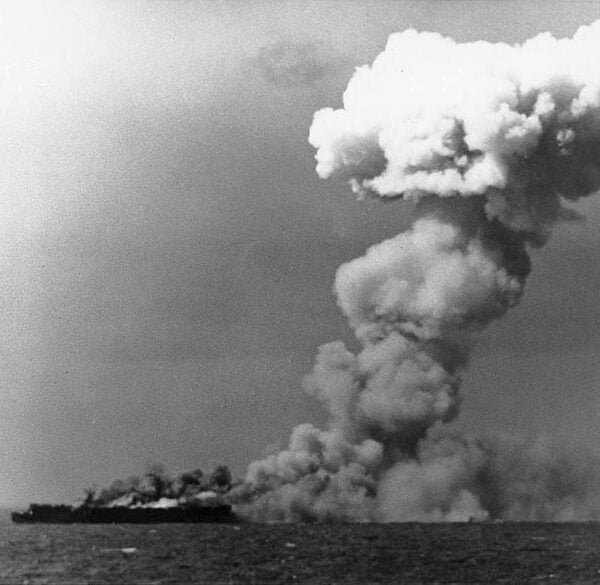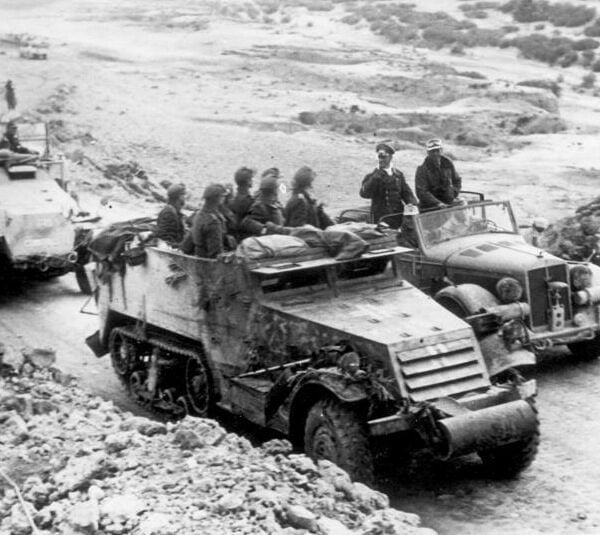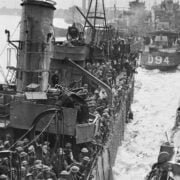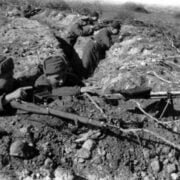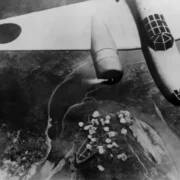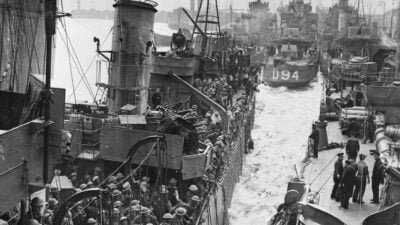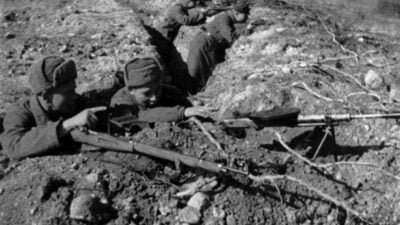During World War II, the Soviet Partisans played a crucial role in the fight against German occupation forces and their collaborators in territories occupied by Nazi Germany. This resistance movement represented an effective form of irregular warfare that undermined German control and supported the Soviet cause.
Also check out: The Afrika Korps of Rommel: The Campaign in North Africa
The Invasion of the Soviet Union and the Formation of the Soviet Partisans
The historical context in which the Soviet Partisans operated is crucial to understand the nature and significance of their resistance movement. The onset of World War II in Western Europe in 1939 primarily involved Nazi Germany and its allies in conflict with allied powers such as the United Kingdom and France. However, in 1941, the conflict expanded eastward with Germany’s invasion of the Soviet Union, marking the beginning of the Eastern Front, also known as the Eastern Front of World War II.


German Invasion
The invasion of the Soviet Union by Nazi Germany, known as Operation Barbarossa, began on June 22, 1941. This event dramatically changed the course of the war and expanded its scope as the vast German forces advanced deep into Soviet territory. German forces, supported by their Axis allies, established a series of bridgeheads and occupied large areas of the Soviet Union, including regions in Ukraine, Belarus, and other territories. The German occupation triggered a series of events that led to the formation of the Soviet Partisans.
Formation of Resistance Groups
The German occupation not only posed a threat to Soviet sovereignty but also brought oppression, persecution, and brutality to local populations. This included the persecution of specific ethnic groups, such as Jews and others deemed enemies by the Nazis. In response to this occupation, many local resistance groups began to form. These groups were primarily composed of civilians, including peasants, intellectuals, Soviet soldiers who had escaped German captivity, and others who refused to accept Nazi occupation.
Soviet Support and Coordination
Local resistance groups received support and guidance from the Soviet government in exile. Soviet leaders recognized the importance of undermining German occupation and actively supported the resistance efforts. This included providing weapons, communications, and in some cases, sending Soviet commanders to coordinate Partisan group operations.
Formation and Structure of the Soviet Partisans
The Partisans were an irregular resistance movement formed by civilians operating in areas occupied by Nazi Germany and its collaborators during World War II. The formation and structure of these resistance groups played a fundamental role in their ability to combat occupation forces and support the Soviet cause.
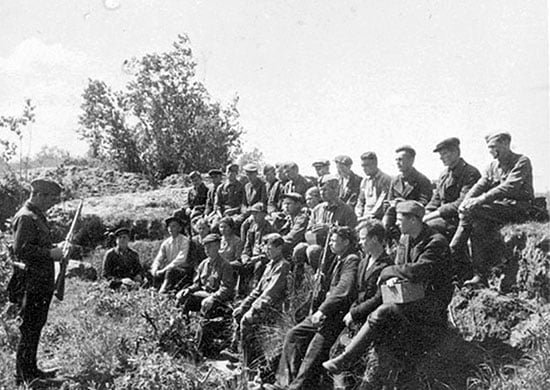

Diverse Origins of the Soviet Partisans
They were composed of individuals from diverse backgrounds. This included peasants, intellectuals, workers, Soviet soldiers who had escaped German captivity, and members of ethnic groups persecuted by the Nazis, such as Jews and Belarusians. The diversity of origins and experiences contributed to the adaptability of the groups and the wide range of skills they could employ in their resistance operations.
Local Organization
Resistance groups were generally organized at the local level. They were led by local commanders who were familiar with the area and the population. These leaders played a crucial role in coordinating operations, making tactical decisions, and mobilizing local resources. The decentralized structure allowed them to adapt to local conditions and effectively respond to German threats.
Soviet Support
Although they were local organizations, many Soviets received support from the Soviet government in exile. This included the provision of weapons, ammunition, communications, and, in some cases, the dispatch of Soviet commanders to coordinate operations. This support enabled them to resist more effectively against occupation forces.
Communication Networks of the Soviet Partisans
The rebels established secret communication networks to coordinate their operations. This was essential to avoid detection by German forces and allowed for the rapid dissemination of information about enemy movements, potential targets, and other relevant activities. Effective communication was a distinctive feature of the resistance.
Recognition and Code of Conduct
The resistance was often well recognized by local populations. They usually operated under a code of conduct that prohibited looting, violence against civilians, and other actions that could harm their image among the local population. This helped garner the support and collaboration of many civilians who shared the desire to rid themselves of German occupation.
Tactics and Activities of the Soviet Partisans
The Soviets employed a variety of tactics and activities to combat German occupation forces and local collaborators during World War II. Their guerrilla operations were crucial in undermining German control and supporting the Soviet cause.
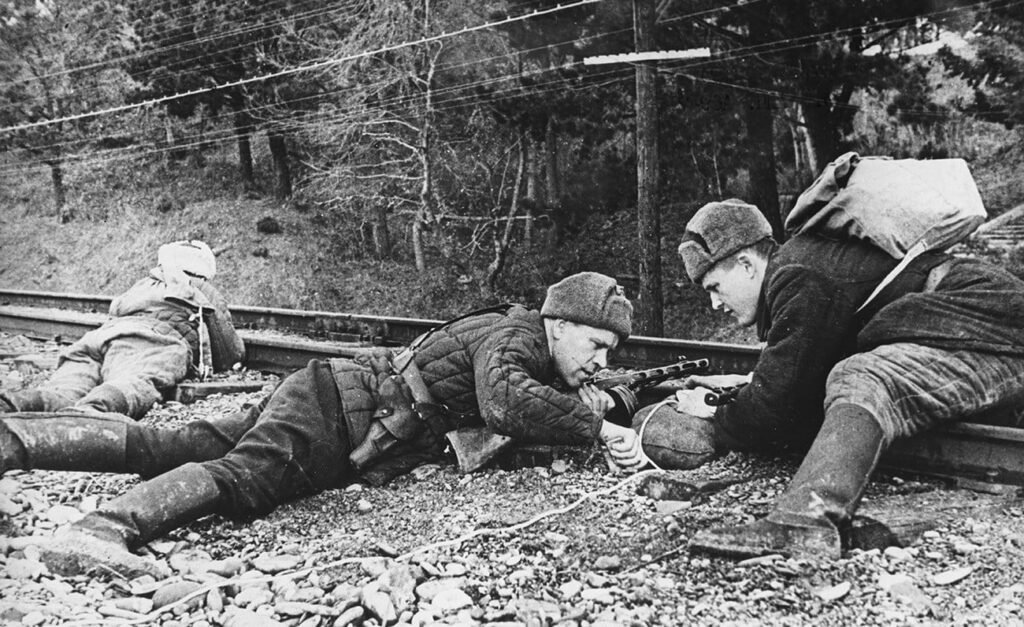

Sabotage and Infrastructure Destruction
One of the main tactics of the resistance was sabotaging and destroying vital infrastructure, such as bridges, railways, communication lines, and military facilities. By disabling these structures, they hindered the German ability to move and communicate effectively. Additionally, these actions caused significant disruptions in German operations.
Ambushes and Guerrilla Warfare
The Partisans frequently conducted ambushes against German patrols, convoys, and isolated units. They leveraged their familiarity with the local terrain to establish advantageous positions and surprise attacks. Ambushes were an effective way to inflict casualties on German forces and undermine their morale.
Gathering Intelligence Information
The Soviets also played a crucial role in gathering intelligence information. They reported enemy movements, identified priority targets, and provided crucial information to regular Soviet forces. This intelligence was valuable for coordinating large-scale operations.
Assisting Escaping Soviet Soldiers
Many captured Soviet soldiers managed to escape German captivity and sought refuge. The resistance groups provided shelter, food, and medical support to these soldiers. This enabled many to return to regular Soviet ranks, enriching the fighting contingent.
Propaganda and Disinformation
They engaged in propaganda and disinformation activities to undermine German occupation. This included distributing anti-German leaflets, running underground radio, and other means of communication. Disinformation often confused German forces and destabilized their control over occupied areas.
Rescue Operations
The Partisans conducted rescue operations to free Soviet prisoners and other individuals held captive by the Germans. These operations demonstrated determination to rescue their compatriots and disrupt the German detention system.
Impact of the Soviet Partisans on the War
The actions of the Soviets had a significant impact on World War II, especially on the Eastern Front, where they fought against German occupation forces and their collaborators. Their role was crucial in undermining the German war machine and supporting the Soviet cause. Let’s explore the impact of these resistance groups.
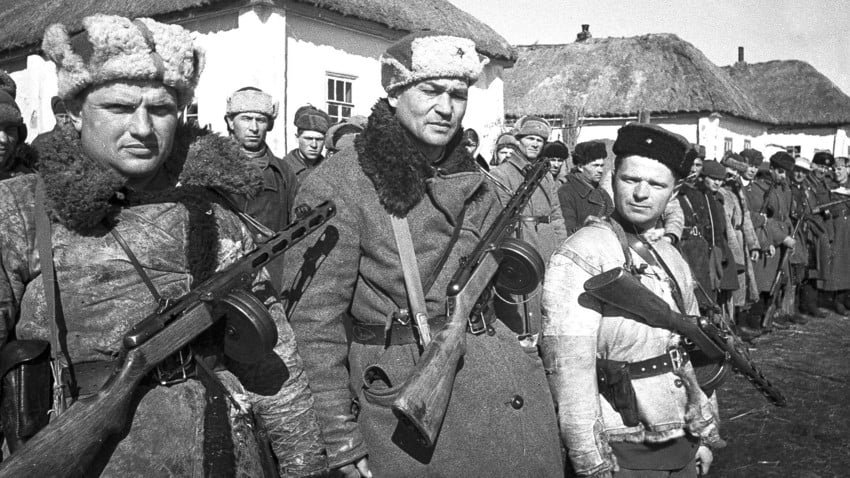

Sabotage and Diversion of German Resources
One of the main contributions of the resistance was the diversion of German resources. German forces had to maintain a significant presence in the occupied areas to contain resistance activities. This meant the Germans had fewer resources to use on the battlefront against regular Soviet forces. This weakened the German war machine.
Coordination with Regular Soviet Forces
The Soviets did not operate in isolation. They worked closely with regular Soviet forces. They provided valuable intelligence on German movements and strategic targets. This allowed regular Soviet forces to coordinate their operations more effectively.
Destabilizing German Control
Operations often destabilized German control over occupied areas. Infrastructure sabotage, ambushes, and other activities made German administration challenging. Furthermore, their continuous presence undermined the morale of German troops, who constantly felt threatened.
Assistance to Escaping Soviet Soldiers
The Partisans played a crucial role in assisting Soviet soldiers who had escaped German captivity. This increased the number of fighters available to regular Soviet forces. They offered shelter, refuge, and medical support to these soldiers, allowing them to return to Soviet ranks.
Propaganda and Disinformation by the Soviet Partisans
Propaganda and disinformation activities contributed to undermining German control and sustaining the morale of the local population. Underground radio transmissions and the distribution of anti-German leaflets raised awareness about the struggle against occupation and undermined German propaganda.
Rescue Operations
Rescue operations to free Soviet prisoners and other individuals held captive by the Germans had a humanitarian and practical impact. It demonstrated the commitment to rescuing their compatriots and undermining the German detention system.
Legacy and Recognition of the Soviet Partisans
The resistance, which played a heroic role in the fight against German occupation during World War II, left a lasting legacy that continues to be recognized and celebrated. Their impact on the war and their dedication to resistance had significant repercussions, both at the time and throughout history.
Recognition after the War
After the end of World War II, the Soviet Partisans were widely recognized for their contributions in the fight against German occupation. Many received decorations and honors from the Soviet government, including medals and honorary titles. These tributes highlighted the vital role they played in the resistance and the final victory over the German forces.
Soviet Collective Memory
The legacy of the Partisans is an essential part of the collective memory of the Soviet Union. They are remembered as national heroes who resisted Nazi occupation and protected the sovereignty of their country. Their stories of courage and determination are passed down through generations and continue to inspire the Russian population and those of other former Soviet nations.
Films, Literature, and Arts About the Soviet Partisans
The legacy of the resistance is also preserved in popular culture and the arts. Numerous films, documentaries, and books have been produced to portray their feats. These works help keep alive the memory of their struggles and contributions. Additionally, monuments and museums dedicated to the resistance can be found in various cities and regions of the former Soviet Union.
Inspiration for Resistance Movements
They continue to be a source of inspiration for resistance movements worldwide. Their courage and determination in resisting enemy occupation in extremely adverse conditions serve as an example of how people can unite in times of crisis and defend their freedom.
Legacy of Resistance
The legacy of the Soviet Partisans is a testament to the human capacity to resist adversity and fight for justice and freedom. They embodied the spirit of resistance in one of the darkest periods of history and left an indelible mark on the history of World War II and the fight for freedom.
